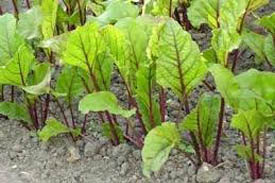Garden Planning and Planting: Strawberries
 In days of yore, Merry Olde England hedgerows yielded the rare but rewarding “streawberry”, where one-pound weight would be sold for ten (English money) pounds. It was risky to race the highways to sell your pickings as highwaymen waited at every turn for money, or the berries. About 1830, in Boston, the first domestication of our modern favorite taste treat appeared, and it has been hybridized ever since. For our garden purposes, and the limitations of space, we are discussing the easier to grow “Ever Bearing” varieties available today in the garden centers, and catalogs. The average correct price, per plant, is about 25cents to 35cents. For a family of two you will need 50 to 75 plants. The minimum spacing of the individual Ever Bearing plants can be squeezed (as I do) to 12″ apart, although most growers prefer 18″.
In days of yore, Merry Olde England hedgerows yielded the rare but rewarding “streawberry”, where one-pound weight would be sold for ten (English money) pounds. It was risky to race the highways to sell your pickings as highwaymen waited at every turn for money, or the berries. About 1830, in Boston, the first domestication of our modern favorite taste treat appeared, and it has been hybridized ever since. For our garden purposes, and the limitations of space, we are discussing the easier to grow “Ever Bearing” varieties available today in the garden centers, and catalogs. The average correct price, per plant, is about 25cents to 35cents. For a family of two you will need 50 to 75 plants. The minimum spacing of the individual Ever Bearing plants can be squeezed (as I do) to 12″ apart, although most growers prefer 18″.
Strawberries prefer a pH (most important) of 5.5 to 6.5, and loamy well-drained soil-no standing water. Yet strawberries require an inch of water each week-more in the blistering droughts this summer; so to conserve moisture for their shallow root system we will mulch.
The best mulch is a bale of good alfalfa 2nd cutting hay. Since ground contact with the hay will ensure more humus to the soil, additional valued minerals are added.
Fertilizer for strawberries is best with straw-manure base at 3′ wide X 100′ long at ? ton. This figures for the smaller garden at 1 bushel per 50 square feet. However most modern gardeners are in suburbia, who, looking for other available options might consider the drum beat of increasing the soil humus rate with leaves as mulch that you can till in. Estimating 5 bushels per 100 square feet you can add greensand and/or rock phosphates as a sprinkle. Leaves provide plenty of nitrogen along with the alfalfa hay.
Lacking the above we fall back to the workhorse: Compost. Assuming we are planting our strawberries in a border fashion-in FULL SUN- around a fence line, or flower beds, we can move into the beds 12 to 18 inches inward, and space as above. We can lay down a 2″ layer of compost. If we are using our White House Model, a border around the 10′ X 20? area we can do the same. If we are planting in a block setting, it is the same as long as we space the plants from one another, as above.
Many gardeners, who plant Ever-Bearing strawberries, plants in “hills”. This could be an option for you as islands of strawberries hither and yon make for interesting decor in the flowerbeds, and larger gardens, when you are nibbling.
My 30′ length of planting is inside a screened Hoop House since there are other nibblers in the surrounding fields and woods. Because it is convenient for me, I am putting down a 2″ layer of sheet composted, and well rotted, rabbit manure (a year old). I will make scooped out holes every 12″. Then I spread the roots open like a funnel and set the shallow roots over a small volcano like mound inside the scooped out area. The root line is critical as you do not want the plant to be above or below from where it was in the pot in which it was removed relative to your ground level. Once set in place, the soil filled in, and tamped down, add a quart of water. Bottom watering the flat, or pots, ahead of planting is a big help.
Pull the compost in to the plant. Next take your Alfalfa hay, which is packed tightly and loosen it up. Fluff it loose. Work a couple inches up to and under the leaves of the plant, spread the fluff outwards perhaps 18 ” wide and certainly continue this sequence until all the plants are set, watered and mulched.
In the likely- hood that we will have another hard freeze before Spring really sets in, you can protect your plants by placing loose fluff six inches above each plant, and when the freeze warning is over, pull the hay back from the leaves to get sunshine. You will be adding a bit of hay anyway as the season wears merrily along.
Ever -Bearing strawberries may, or may not, make runners; it all depends on the variety. If your plant makes runners, these become baby plants. Just help the runner tips make soil contact. They ought to start production this June till next Fall. At that time we will be discussing Fall gardening and feeding roots. Remember the importance of an inch of water each week per plant. That averages about 1 gallon of water per plant each week. Since the strawberry is shallow rooted you will have to concentrate on watering each plant separately for best results. Check under the mulch to visually observe if the roots are getting enough water by maintaining dampness in the bottom of the mulch.
Yellow leaves indicate a lack of nitrogen-so a tiny pinch of blood meal, or cottonseed meal fertilizer is indicated. I suspect that most commercial composts will contain too much nitrogen anyway. Strawberries really like high content of phosphorous, and no potash. Lacking all of the above farmyard fertilizers, bone meal makes a good strawberry organic fertilizer Try sprinkling in the soil around the plant after setting in the soil. .
Probably the only pest that will bother you is slugs. These creatures eat only decomposing materials and generally ignore green leaves. They too have their place in ecology minded gardens-but not mine. Place a board down, and in the morning turn it over and it will have slugs attached. Sprinkle salt on them and they will dry up. Slugs and snails produce 40,000 eggs a year each.
Reliable mail order strawberries are commonplace. Order an extra in case of an occasional loss, or too much nibbling. Try www.vermontbean.com for Ozark Beauty strawberries.
Copyright: 2008, Back2theLand, Mark Steel



